|
The Hellenic Genocide
Quotes from historical documents and related Photos. |
|||
CHAPTER XIX: "She described vividly to me the robbing of the refugees by Turks, soldiers and civilians—both on the water-front and at the moment of their embarking. While our men were helping these unfortunate people to get away, the Turks were pawing them over, women and men, searching through their clothes for any money or valuables that they might have on them." CHAPTER XIX: "This last scene on the Smyrna quay reveals the whole diabolical and methodically carried-out plan of the Turks. The soldiers were allowed to glut their lust for blood and plunder and rape by falling first on the Armenians, butchering and burning them and making free with their women and girls. But the Greeks, for whom a deeper hatred existed, were reserved for a slower and more leisurely death. The few that have been coming back tell terrible tales. Some were shot down or killed off in squads. All were starved and thousands died of disease, fatigue and exposure. Authentic reports of American relief workers tell of small bands far inland that started out thousands strong." CHAPTER XIX: "The object of Khemal, as we have seen, was one of simple extermination. The reason alleged was one of those shrewd subterfuges used by the Turks to fool Europeans. But not all the unfortunates carried away by the Turks were Greek men. Many thousands of Christian women and girls still remain in their hands to satisfy their lusts or to work as slaves. A report submitted to the League of Nations gives the number as "upward of fifty thousand," but this seems a very conservative estimate. The United States should sign no treaty with Turkey until these people are given up." CHAPTER XX: "This description of the condition of Asia Minor as the result of the capture of Constantinople continued down to the ultimate complete destruction of the Christians by the Turks. Nothing changed in the nearly five centuries that have passed. The Turk has not altered either in his character or his methods. The scenes described by Pears as following the taking of the Queen City, the massacres and violation of women, were duplicated at Smyrna, with the added horror of the sufferings of the Christians on the quay." CHAPTER XX: "After Constantinople, Smyrna, "Ghiaour Smyrna," became the last stronghold of Christianity and Greek culture in the Near East. It had its great and valuable libraries, its learned men, its famous schools. The Greeks and Armenians could at any time have attained safety by abjuring their faith. Yet, though there have been apostates, they have, in general, kept the faith and have suffered." CHAPTER XXI: "Official statistics give the Armenian inhabitants of Smyrna as twenty-five thousand and it is certain that the larger part of the men of this community were killed, besides many women and girls, also numerous Greeks. A dispatch to the "London Daily Chronicle" of September 18, 1922, says: "The lowest estimate of lives lost given by the refugees, places the total at one hundred and twenty thousand."" CHAPTER XXI: "The "London Times" correspondent telegraphed: "The killing was carried out systematically. Turkish regulars and irregulars are described as rounding up likely wealthy people in the streets and, after stripping them, killing them in batches. Many Christians who had taken refuge in the churches were burned to death in the buildings which had been set on fire."" CHAPTER XXI: "Mr. Otis Swift, correspondent of the "Chicago Tribune", visited the Greek islands on which refugees had been dumped by the rescue steamers and saw many of the victims of the tragedy, whose stories and the nature of whose wounds bore additional testimony to the ferocity of the Turks. Here is a short quotation from Mr. Swift’s report: "Hospitals of the Greek islands are crowded by people who had been beaten and attacked by the Turks. In a hospital at Chios I saw a child who still lived, although shot through the face by a soldier who had killed its father and violated its mother. In the same hospital there was a family of six orphan Armenians. A four-year-old baby of this family had been beaten with rifle butts because no money had been found sewn in its clothes."" CHAPTER XXI: "There is no doubt that many thousands of the defenseless inhabitants of Smyrna and the surrounding country were done to death by Turks. To the number actually killed on the days of the massacre must be added the deported Greeks who perished, the people who died in the flames or were killed by falling walls, those who expired on the quay and those who have since succumbed from want, injuries or grief. The extent of the catastrophe can be realized from the magnitude of the relief work that has been carried on ever since, and from the immense sums which have been raised, principally in America, for the maintenance of the widows and orphans." The Hellenic Genocide Quotes from historical documents and related Photos. Previous page | Initial page | Site Map | Next page (25th of 29) |
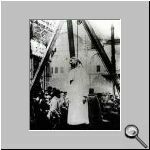
A Christian being hanged in Smyrna.
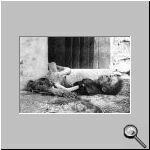
A Christian child lies dead in front of a house.
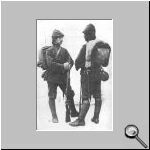
The modern Turkish soldier, drilled by the German intructors.
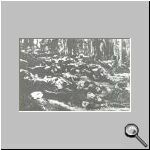
Armenians massacred in a forest.
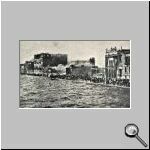
Buildings on fire and people trapped by the fire and the sea.
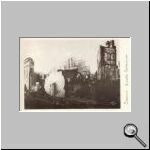
The Saint Ekaterini Church in Smyrna. Burnt.
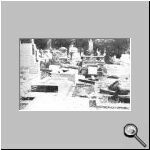
Total destruction of a cemetery in Constantinople.
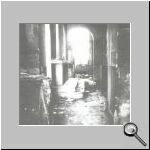
Destroyed interior of the Church of Evangelistrias.
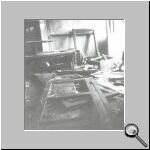
The destroyed office of the Church of Evangelistrias.
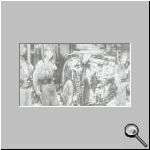
Turkish soldiers celebrate the pogrom of Hellenes in 1955.